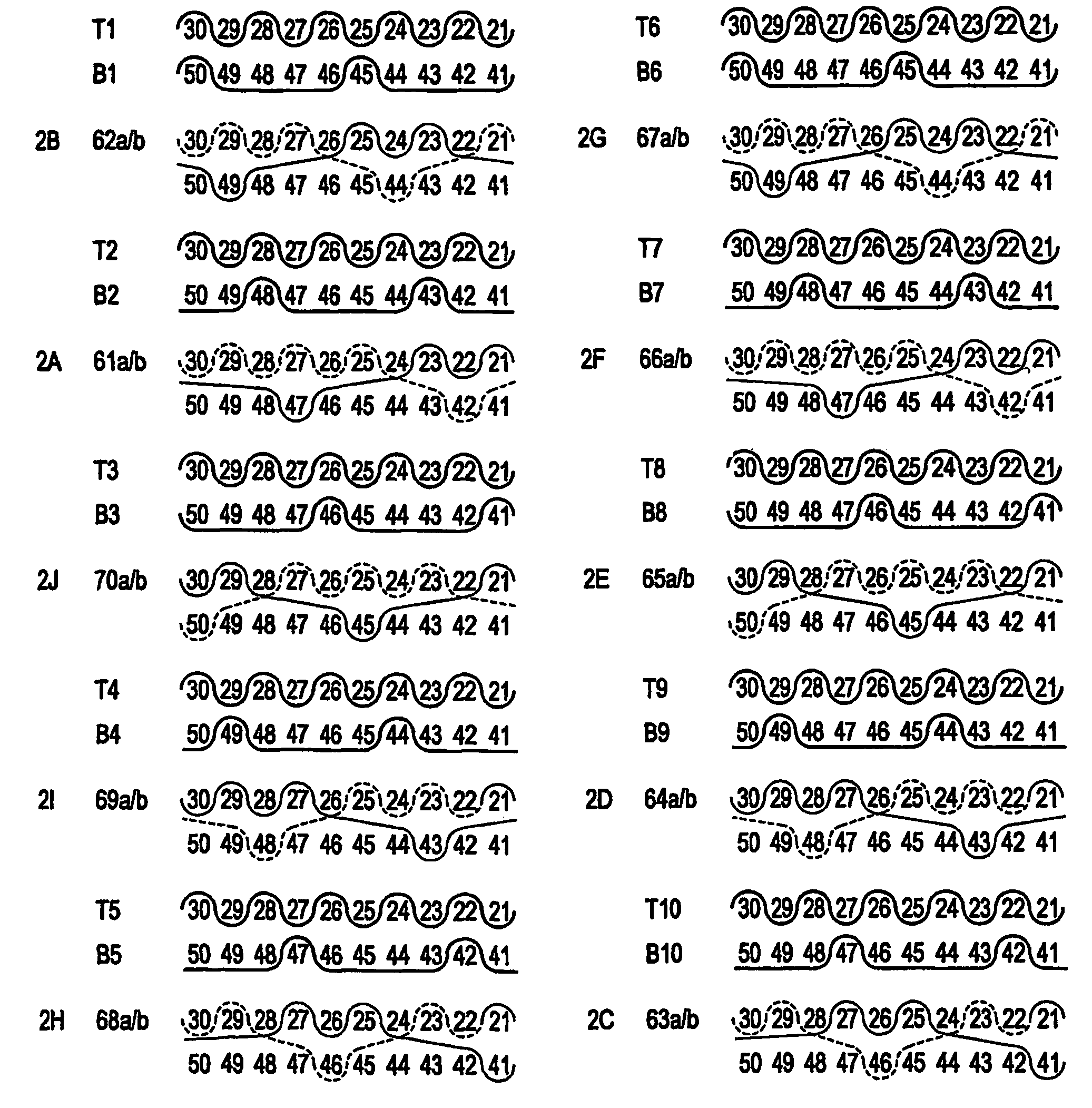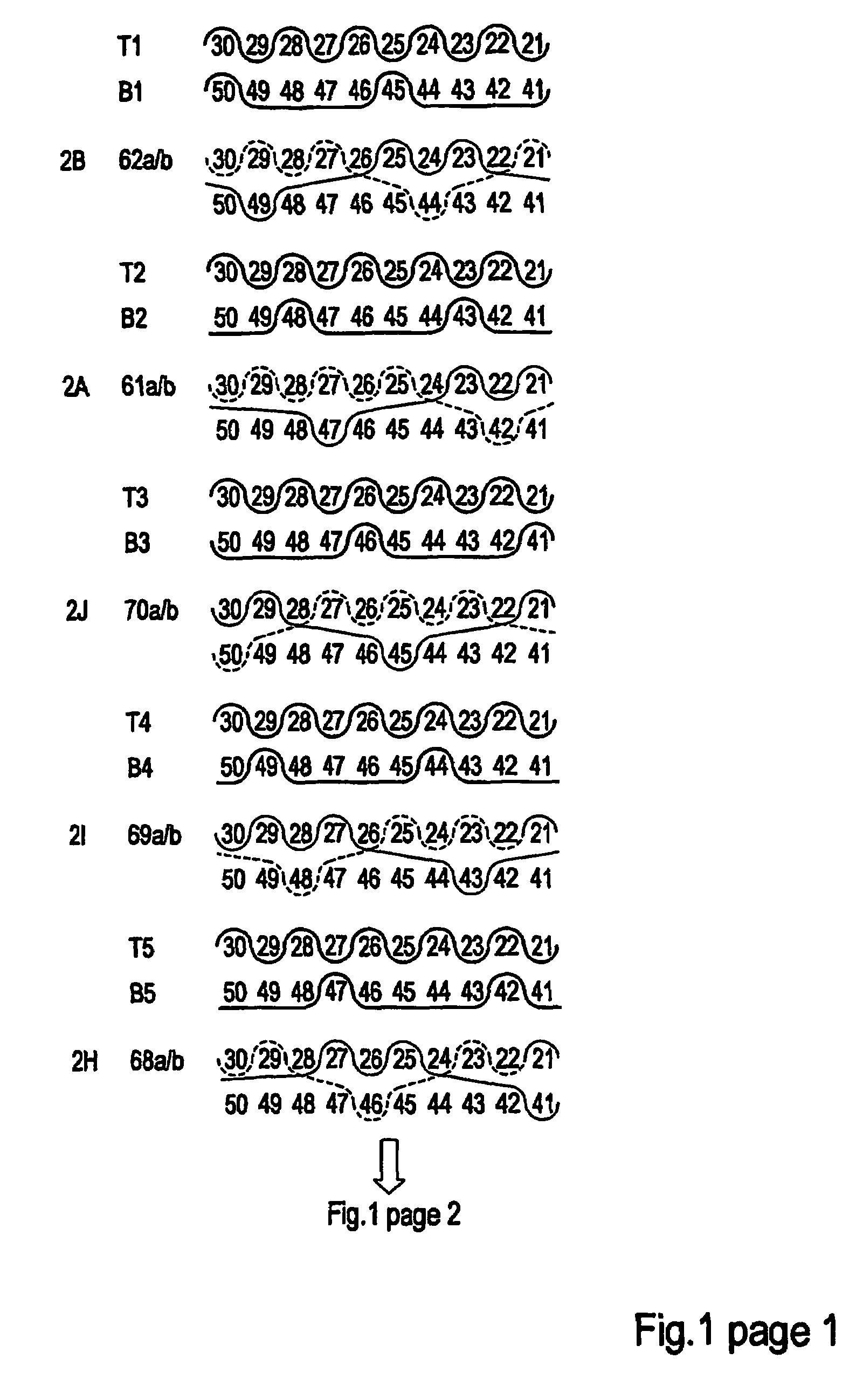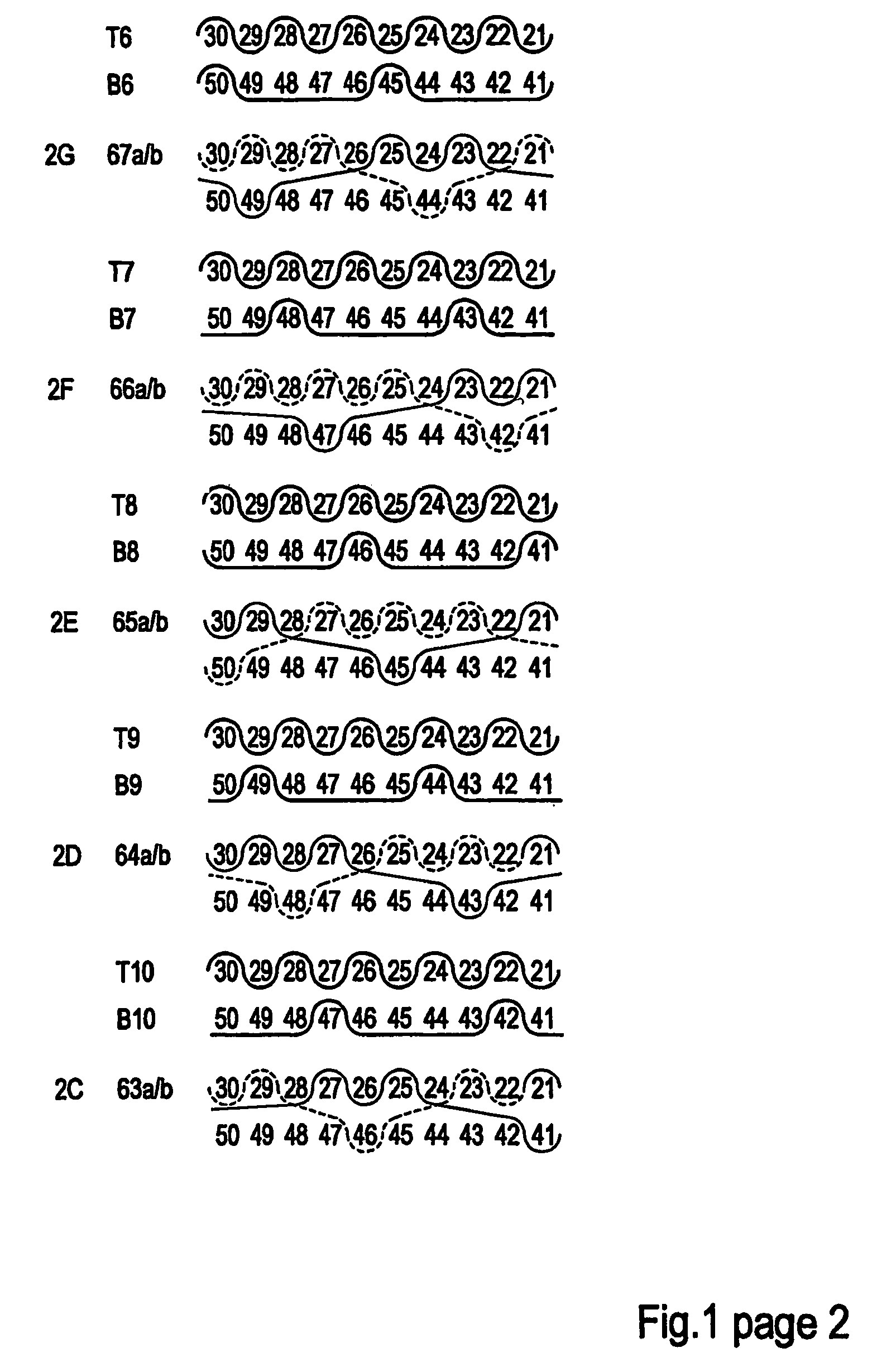High shaft forming fabrics
a high-shaft, fabric technology, applied in the field of fabrics, can solve the problems of wire marks, undesired variations in sheet absorption properties, etc., and achieve the effect of reducing the risk of wire marks
- Summary
- Abstract
- Description
- Claims
- Application Information
AI Technical Summary
Benefits of technology
Problems solved by technology
Method used
Image
Examples
first embodiment
[0134]Referring to FIG. 2, a fabric in accordance with this invention is illustrated at 20; showing a single full fabric weave repeat and comprising 14 paper side wefts (T1, T2, T3 . . . T14), 14 wear side wefts (B1, B2, B3 . . . B14), and 14 pairs of interchanging, binder weft yarns (I1 / 2, I3 / 4, I5 / 6 . . . I27 / 28).
[0135]The fabric 20 has a twenty (28) shaft repeat, including a fourteen (14) warp top layer (1, 3, 5, . . . 27) having a paper side surface within each repeat, a fourteen (14) warp machine side layer (2, 4, 6, . . . 28) having a bottom wear side surface within each repeat and a plurality of pairs of first and second intrinsic interchanging weft binder yarns (I1 / 2 through I27 / 28).
[0136]As illustrated in the weft path weave patterns depicted in FIG. 2, the top layer includes top warp yarns 1, 3, 5 . . . 27 within each repeat interwoven with top, i.e., paper side, weft yarns T1, T2 . . . T14 and top segments of the interlacing binder pairs I1 / 2, I3 / 4, I5 / 6 . . . I27 / 28 to f...
second embodiment
[0150]Referring to FIG. 3, a fabric in accordance with this invention is illustrated at 30; showing the full weave paths for all paper side wefts (T1, T2, T3 . . . T14), wear side wefts (B1, B2, B3 . . . B14), and interchanging binder weft pairs (I1 / 2, I3 / 4, I5 / 6 . . . I27 / 28). As will be discussed in detail hereinafter, except for the arrangement of the interchanging binder pairs, the fabric 30 is the same as the fabric 20.
[0151]Specifically the fabric 30, like the fabric 20, has a twenty-eight (28) shaft repeat, including a fourteen (14) warp top layer (1, 3, 5, . . . 27) having a paper side surface within each repeat, a fourteen (14) warp machine side layer (2, 4, 6, . . . 28) having a bottom wear side surface within each repeat and a plurality of pairs of first and second intrinsic interchanging weft binder yarns (I1 / 2 through I27 / 28).
[0152]As illustrated in the weft path weave patterns depicted in FIG. 3, the top layer includes top warp yarns 1, 3, 5 . . . 27 within each repeat...
third embodiment
[0166]Referring to FIG. 4, a fabric in accordance with this invention is a 28 shaft repeat and is illustrated at 40; showing the full weave paths for all paper side wefts (T1, T2, T3 . . . T14), wear side wefts (B1, B2, B3 . . . B14), and interchanging binder weft pairs (I1 / 2, I3 / 4, I5 / 6 . . . I27 / 28). As will be discussed in detail hereinafter, except for the arrangement of the interchanging binder pairs, the fabric 40 is the same as the fabrics 20 and 30.
[0167]Specifically the fabric 40, like the fabrics 20 and 30, has a twenty eight (28) shaft repeat, including a fourteen (14) warp top layer (1, 3, 5, . . . 27) having a paper side surface within each repeat, a fourteen (14) warp machine side layer (2, 4, 6, . . . 28) having a bottom wear side surface within each repeat and a plurality of pairs of first and second intrinsic interchanging weft binder yarns (I1 / 2 through I27 / 28).
[0168]As illustrated In the weft path weave patterns depicted in FIG. 4, the top layer includes top warp ...
PUM
 Login to View More
Login to View More Abstract
Description
Claims
Application Information
 Login to View More
Login to View More - R&D
- Intellectual Property
- Life Sciences
- Materials
- Tech Scout
- Unparalleled Data Quality
- Higher Quality Content
- 60% Fewer Hallucinations
Browse by: Latest US Patents, China's latest patents, Technical Efficacy Thesaurus, Application Domain, Technology Topic, Popular Technical Reports.
© 2025 PatSnap. All rights reserved.Legal|Privacy policy|Modern Slavery Act Transparency Statement|Sitemap|About US| Contact US: help@patsnap.com



